Quarantine Theme Park Adventure
This module explores roller coasters! Students will build a roller coaster using insulation pipes and marbles to explore many physics principles, such as velocity, acceleration, conservation of energy, work and energy theorem, kinetic and gravitational potential energy, and gravitational pull.
After this module you will be able to:
- Identify positions where the marble has maximum or minimum potential and kinetic energy.
- Illustrate a force body diagram of the marble.
- Explain how gravitational pull and friction will affect the motion of the marble.
- Apply the work and energy theorem, and conservation of energy physics principle.
- Visualize the concept of momentum when the marble goes up and down the ramp.
- Visualize the concept of centrifugal force when the marble goes in a circular motion.
- Demonstrate the law of inertia by moving the marble down the roller coaster; there are no other unbalanced forces acting upon the marble, which will make the marble stay in motion after putting it inside the roller coaster.
SCIENCE TEKS
- 6.3(A) Analyze, evaluate, and critique scientific explanations by using empirical evidence, logical reasoning, and experimental and observational testing, so as to encourage critical thinking by the student.
- 6.8(A) Compare and contrast potential and kinetic energy.
- 6.8(B) Identify and describe the changes in position, direction, and speed of an object when acted upon by unbalanced forces.
- 7.2(B) Design and implement experimental investigations by making observations, asking well defined questions, formulating testable hypotheses, and using appropriate equipment and technology.
- 8.4(B) Use preventative safety equipment, including chemical splash goggles, aprons, and gloves, and be prepared to use emergency safety equipment, including an eye/face wash, a fire blanket, and a fire extinguisher.
- 8.6(C) Investigate and describe applications of Newton’s three laws of motion such as in vehicle restraints, sports activities, amusement park rides, Earth’s tectonic activities, and rocket launches.
- P.6(B) Investigate examples of kinetic and potential energy and their transformations.
Materials
- Print student handout
- Insulated foam pipe (found at a local hardware store, like Lowes or Home Depot)
- Marbles (variety of marbles would be recommended)
- Masking tape
- Utility safety knife or scissors
- Paper
- Smartphones with slow-motion mode and stopwatch
- Landing target or plastic cup
Safety
- Ask an adult for permission and assistance when working with a knife or scissors. Stay 100% focused while using the knife or scissors. Never touch a knife’s blade. Remember to cut away from your body. Keep all fingers out of your cutting line.
- Marbles are one of the most common choking hazards. Please do not swallow or throw the marbles. Also, do not place marbles on the ground as they could be a slipping hazard.
Activity
In this activity, you are going to build a roller coaster out of insulation foam pipes, marbles, and some common household items. Watch the video below.
Steps
- Watch the video above.
- Gather your materials from the list above.
- Find a place that you can start to build your roller coaster. This can be a wall, a countertop, or wherever you think your roller coaster can work!
-
Have a parent/guardian supervise as you cut the foam pipe open in half lengthwise
using a utility safety knife or scissors, so the inside parabolic shape will be acting
as a guided track for the marbles to travel. See the example belowto the right.

- On a piece of paper, design your dream roller coaster. Be creative. You can incorporate any household items to make your roller coaster unique and innovative.
- Set up a target at the end of your roller coaster to see if you can get your marble to land on it or in it, after it takes a ride.
- Once this design is done, build it! Try to see what adjustments you can make in order to make sure that your roller coaster is generating the most energy for your marble and is able to hit the target.
- After giving your coaster a few test runs, think about what is helping the marble hit the target and/or what may be causing it to not work or not work as well as you would like.
- Continue making new designs and models until you have been able to hit the target at a couple of different spots. Keep all of your design drawings and take pictures as you test.
- As you test your roller coaster, take a few videos (maybe even in slow motion) to show your best and not-so-best designs!
Dig Deeper
Read More
Do you know where the world’s fastest roller coaster is located? Have you ever wondered how a roller coaster works? Check out this short article describing some of the physics behind roller coasters. Read More
Try This
Did you know before building a roller coaster, engineers and scientists use virtual simulations to see how the design will work. Check out this online simulation, and how various additions to the design affect the (gravitational) potential energy, kinetic energy, and the total mechanical energy. Read More
Watch This
Have you wondered what the world would be like if there was no friction? We did too! Check out this video from the “What If” YouTube channel, "What If There was No Friction for 1 Minute?" Read MoreShow What You Know
Meet Our Expert
Did you know there’s something even smaller than an atom? Meet Claudia Ratti, Ph.D., an Associate Professor from the University of Houston’s Department of Physics, who works on Quark–Gluon Plasma Physics at the Large Hadron Collider. Dr. Ratti has always been interested in science even when she was little. When she found out that physics allowed her to study the most fundamental rules that governed nature, she knew it was for her. Dr. Ratti is equally interested in passing on her knowledge to the next generation of physicists as she is about her research. Be sure to watch her video about her research to find out a little more about the littlest things with the biggest impacts.
Meet The Teachers
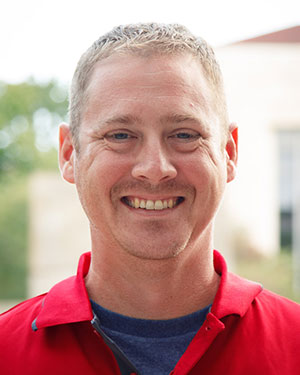
Brandon Rathke
Pre-AP Chemistry Teacher, Dickinson High School, Dickinson Independent School District,
University of Houston, College of Natural Sciences and Mathematics, teachHOUSTON Alumni
Brandon is an alumna of the first teachHOUSTON Alternative Certification Program for
STEM. He is a chemistry teacher at Dickinson High School in Dickinson, TX. Brandon
earned his Physics degree and minor in Mathematics in 2005 (University of Missouri)
and joined the US Navy Nuclear Engineering program. In 2007, he qualified as a submarine
nuclear engineer officer and served in the submarine service until 2013. That same
year, he finished his MBA (Ohio State University) and moved to Houston. He worked
in the oil, gas, and chemical refining industry for five years before starting his
teaching career. Brandon loves sailing, playing guitar, and learning. He’s always
been interested in astronomy and enjoying nature. His goal is to make students confident,
critical thinkers equipped to take on tomorrow’s biggest challenges.

Tri Duong
Mathematics Major, Physics Minor, teachHOUSTON Alumnus, University of Houston, College of Natural Sciences and Mathematics
Tri is a teachHOUSTON and University of Houston alumnus. He is currently an AP Physics 1 & 2 teacher
at DeBakey High School for Health Professions. He is really passionate about teaching
physics and doing cutting-edge research in particle physics and particle accelerator
science and technology at US national laboratories around the country during the summer.
In his free time, he likes to code and build robots, and play the cello.

Aerielle Rodriguez
Biology Major, Mathematics and Medicine and Society Minor, teachHOUSTON Preservice Teacher, University of Houston, College of Natural Sciences and
Mathematics
Aerielle is a 4th year undergraduate student at the University of Houston majoring
in Biology and minoring in Mathematics and Medicine and Society. She is part of the teachHOUSTON Program to become a future high school science teacher. She is equally as
passionate about education as she is about health and looks forward to bringing that
passion to her future students. Growing up as the daughter of two nurses, medicine
always felt like a natural fit, but over time a love for teaching developed. In her
free time, she explores other passions such as fitness, TV shows, and plays with her
dog Ellie.
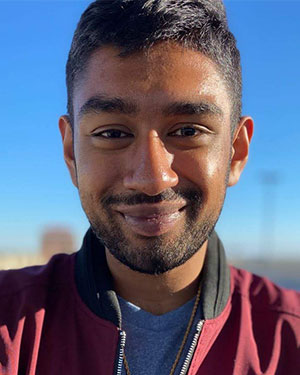
Alexander Mathen
Chemical Engineering Major, Chemistry Minor, teachHOUSTON Preservice Teacher, University of Houston, Cullen College of Engineering
Alexander is a 3rd year undergraduate student working on getting his teaching degree
from the teachHOUSTON Program, as well as his bachelor’s degree in Chemical Engineering. Alexander
is working to become a role model for his future students and is willing to go through
great lengths to make sure everyone succeeds! Alexander loves sports, especially basketball
and football. He also jogs 3 miles every day.
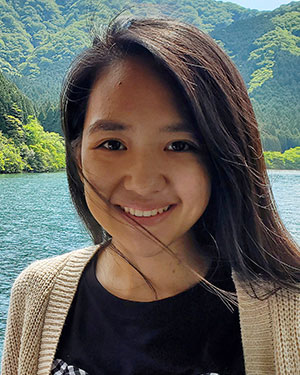
Amber Ooi
Biology Major, Data Science Minor, teachHOUSTON Preservice Teacher, University of Houston, College of Natural Sciences and
Mathematics
Amber is a junior at the University of Houston where she is a Biology major and a
part of the teachHOUSTON Program. She is really passionate about Ecology and new discoveries about
Biology! She is currently working on research in the lab and her teaching career.
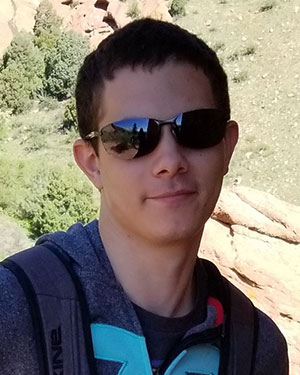
Paul Womack
Mathematics Major, teachHOUSTON Preservice Teacher, University of Houston, College of Natural Sciences and
Mathematics
Paul is a 4th year Math undergraduate at the University of Houston and a preservice
teacher in the teachHOUSTON Program. Paul is excited to be a Math teacher soon, so he can show his students
how Math is actually the most awesome subject. Also, he would like to start sleeping
again!
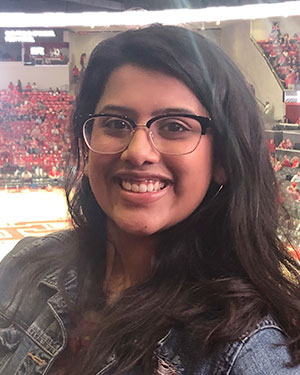
Reshmi Joseph
Biochemistry Major, Chemistry Minor, teachHOUSTON Preservice Teacher, University of Houston, College of Natural Sciences and
Mathematics
Reshmi is an undergraduate at the University of Houston majoring Biochemistry and
minoring in Chemistry. She is a part of the teachHOUSTON Program to learn how to enhance students’ learning in STEM. She plans to become
a medical doctor in the future and to focus on helping communities around her. In
her free time, she likes to snuggle with her dog Daisy and watch Bollywood movies
with her family.
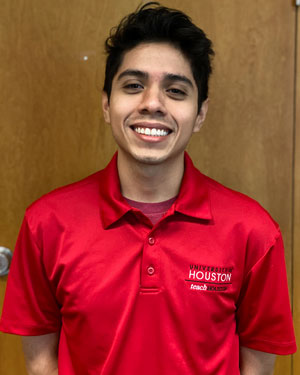
Stephen Medel
Physics Major, Math Minor, teachHOUSTON Preservice Teacher, University of Houston, College of Natural Sciences and
Mathematics
Stephen is an undergraduate at the University of Houston majoring in Physics major
and minoring in Mathematics. He is currently the vice president of the teachHouston
Student Society at UH for Fall 2020 and Spring 2021 and is looking forward to being
able to teach Physics and/or Mathematics. He likes to spend time with his adorable
dog Murphy and studying Math and Physics.
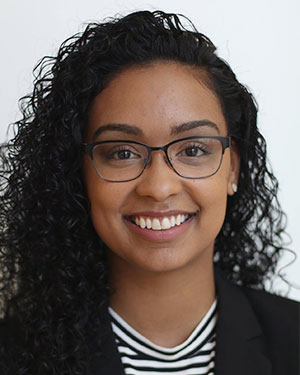
Liandra Larsen
teachHOUSTON STEM Interactive Video Editor
Liandra is a Research Graduate Assistant for the teachHOUSTON Program. Currently, she’s pursuing her Ph.D. in Higher Education Leadership
and Policy Studies at the University of Houston. Her research interests include improving
the university experience for first-generation and transfer students. In her spare
time, she enjoys dancing, binge-watching shows on Netflix, and overspending at Target.
- https://www.physicsclassroom.com/Physics-Interactives/Work-and-Energy/Roller-Coaster-Model/Roller-Coaster-Model-Interactive
- https://www.wonderopolis.org/wonder/how-do-roller-coasters-work#:~:text=Two%20of%20the%20most%20significant,as%20you%20ride%20the%20ride.
- https://www.youtube.com/watch?v=8dHmLdjcOoc
- https://www.arborsci.com/blogs/cool/energy-and-motion-demos-and-experiments
- https://www.myphysicslab.com/roller/roller-single-en.html
- https://media.shermanstravel.com/Advice/952x460_rollercoaster_istock.jpg